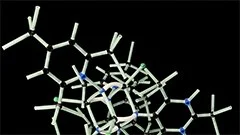Introduction
The immune system is a complex network of cells, tissues, and organs that work together to protect the body from harmful pathogens such as bacteria, viruses, fungi, and parasites. The immune system can be divided into two broad categories: innate immunity and adaptive immunity. Innate immunity provides the first line of defense against invading pathogens and is non-specific, meaning it does not need to recognize specific antigens to mount a response. This course will delve into the intricacies of innate immunity, exploring its various components, mechanisms, and roles in maintaining host homeostasis.
Historical Background
The concept of innate immunity dates back to the late 19th century when Elie Metchnikoff proposed the idea of non-specific defense mechanisms based on his observations of starfish larvae. Later, in the early 20th century, Richard Pfeiffer and Jules Bordet demonstrated that the complement system played a critical role in innate immunity by mediating phagocytosis. Throughout the years, advancements in technology and research methods have expanded our understanding of innate immunity and its importance in maintaining host health.
Overview of Innate Immunity
Innate immunity encompasses a wide array of mechanisms that are activated upon pathogen invasion. These mechanisms include physical barriers, soluble factors, and cellular components. Some key aspects of innate immunity are:
- Physical Barriers: The skin and mucous membranes form the first line of defense against invading pathogens. They act as physical barriers that prevent pathogens from entering the body and establish a hostile environment for their survival.
- Soluble Factors: Various soluble factors, such as complement proteins, antimicrobial peptides, and interferons, work together to neutralize or destroy pathogens.
- Cellular Components: Phagocytes, natural killer (NK) cells, and dendritic cells are crucial components of the innate immune system that engulf and eliminate pathogens or initiate adaptive immune responses.
- Inflammation: The inflammatory response is a key aspect of innate immunity that involves the recruitment of leukocytes, the release of cytokines and chemokines, and the dilatation of blood vessels to promote pathogen clearance and tissue repair.
Components of Innate Immunity
Physical Barriers
Skin
The skin is the largest organ in the human body and acts as a physical barrier against invading pathogens. It is composed of three layers: epidermis, dermis, and hypodermis. The epidermis contains keratinocytes, which produce keratin to form a protective layer that prevents pathogen entry.
Mucous Membranes
Mucous membranes line various body surfaces, such as the respiratory, gastrointestinal, and genitourinary tracts. They secrete mucus, which traps pathogens and prevents their attachment to the epithelial cells. Additionally, mucus contains antimicrobial peptides that help neutralize invading microorganisms.
Soluble Factors
Complement System
The complement system is a complex network of proteins that work together to recognize and destroy pathogens. It consists of three distinct pathways: the classical, alternative, and lectin pathways, which converge at the terminal stage to form the membrane attack complex (MAC). The MAC punctures the pathogen membrane, leading to its lysis and elimination.
Antimicrobial Peptides
Antimicrobial peptides are small proteins that possess antimicrobial activity against invading pathogens. They can be produced by various cells within the innate immune system, such as neutrophils and epithelial cells. Examples of antimicrobial peptides include defensins, cathelicidins, and lysozymes.
Interferons
Interferons are a family of cytokines produced by infected or activated immune cells in response to viral infection. They have antiviral, antiproliferative, and immunomodulatory effects, helping to limit virus replication and prevent the spread of infection. There are three types of interferons: IFN-α, IFN-β, and IFN-γ.
Cellular Components
Phagocytes
Phagocytes are cells that engulf and destroy pathogens through phagocytosis. They include neutrophils, monocytes, macrophages, and dendritic cells. Neutrophils are the most abundant type of leukocyte in circulation and are the first to arrive at the site of infection.
Natural Killer (NK) Cells
Natural killer (NK) cells are large granular lymphocytes that play a crucial role in the innate immune system by killing infected or abnormal cells. They recognize and destroy their targets through the recognition of certain molecules on the target cell surface, such as the major histocompatibility complex class I (MHC-I) protein.
Dendritic Cells
Dendritic cells are professional antigen-presenting cells that play a critical role in both innate and adaptive immunity. They phagocytose pathogens, process the antigens, and present them to T cells, thereby initiating an adaptive immune response.
Inflammation
Inflammation is a localized response to tissue injury or infection that involves the recruitment of leukocytes, the release of cytokines and chemokines, and the dilatation of blood vessels. This process promotes pathogen clearance, tissue repair, and healing. The four hallmarks of inflammation are redness, heat, swelling, and pain.
Recruitment of Leukocytes
Leukocytes, or white blood cells, are essential components of the immune system that play a role in both innate and adaptive immunity. During an inflammatory response, leukocytes are recruited to the site of injury or infection through a process known as chemotaxis. This process involves the binding of chemokines and cytokines to their receptors on leukocyte surfaces, causing them to migrate towards the affected area.
Release of Cytokines and Chemokines
Cytokines are small proteins that play a critical role in cell signaling within the immune system. They can be produced by various cells, including immune cells, endothelial cells, and fibroblasts. During an inflammatory response, cytokines are released to promote the recruitment of leukocytes, activate phagocytes, and stimulate tissue repair.
Dilatation of Blood Vessels
During an inflammatory response, blood vessels in the affected area dilate, increasing blood flow and promoting the recruitment of leukocytes and the delivery of nutrients to support tissue repair. This process is mediated by the release of vasodilatory factors, such as nitric oxide and prostaglandins.
Regulation of Innate Immunity
Regulation of the innate immune system is essential to prevent excessive or inappropriate responses that can lead to tissue damage and autoimmune diseases. Two main mechanisms are responsible for regulating the innate immune response: negative feedback loops and regulatory cells.
Negative Feedback Loops
Negative feedback loops serve to limit the magnitude and duration of an inflammatory response. They involve the production of anti-inflammatory cytokines, such as IL-10 and TGF-β, which counteract the effects of pro-inflammatory cytokines, such as TNF-α and IFN-γ.
Regulatory Cells
Regulatory cells, or suppressor cells, play a crucial role in maintaining immune tolerance and preventing autoimmune diseases. They include regulatory T cells (Tregs), myeloid-derived suppressor cells (MDSCs), and neutrophils with suppressive activity. These cells inhibit the activation and proliferation of effector cells, thereby limiting the immune response.
Clinical Relevance of Innate Immunity
Understanding the components and regulation of the innate immune system is crucial for developing targeted therapies for various diseases, such as bacterial infections, viral infections, and cancer. For example, monoclonal antibodies that target specific proteins within the complement system can be used to treat autoimmune diseases or prevent transfusion reactions. Additionally, cytokine-based therapies can be used to stimulate the immune response in patients with cancer or infectious diseases.
Conclusion
The innate immune system serves as the first line of defense against invading pathogens and is essential for maintaining homeostasis within the body. It consists of physical barriers, soluble factors, cellular components, and regulatory mechanisms that work together to recognize, eliminate, and prevent the spread of infection. Understanding the components and regulation of the innate immune system is crucial for developing targeted therapies for various diseases and maintaining human health.
MCQ: Test your knowledge!
Do you think you know everything about this course? Don't fall into the traps, train with MCQs! eBiologie has hundreds of questions to help you master this subject.
These courses might interest you
Create a free account to receive courses, MCQs, and advice to succeed in your studies!
eBiologie offers several eBooks containing MCQ series (5 booklets available free for each subscriber).




